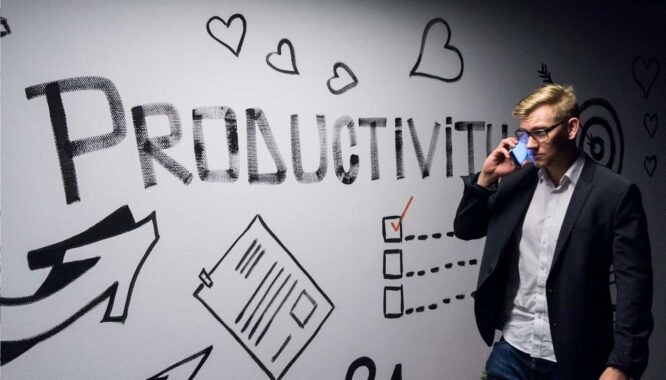
You didn’t get into HR to chase after signatures for contracts or reformat offer letters over and over. But somehow, this is still how you spend half of your day.
Zoom interviews are happening while there are multiple Slack pings from managers sharing performance reviews. A shared doc gets updated mid-meeting while someone, somewhere, is digging through folders for the right file. In the middle of this motion, seamless workflows aren’t a luxury; they’re the quiet core of everything that works.
Yet for many organizations, the concept of “workflow” still feels abstract. It’s not a line item in a budget or a KPI in a report. But it shapes how people show up for their work. A broken process chips away at energy, while a smooth one turns effort into progress. Creating seamless workflows is now the difference between teams that tread water and those that move with force.
Related articles:
Integrated HR Workflows: What Does it Mean for Businesses?
The Best Use Cases for HR Workflow Automation
Why seamless workflows are no longer optional
Years ago, internal teams could get by with clunky systems. There could be manual onboarding and scattered policies with a dose of outdated forms and no one really batted an eye as long as it worked.
But now? The sheer pace of work has made inefficiency intolerable. One policy buried in someone’s inbox or an unsent form forgotten until the last minute can derail the entire onboarding process.
We live in an ecosystem of instant feedback and immediate expectations. Clients expect faster responses. Leadership wants real-time visibility. Remote work has become standard, not a perk. All of this increases pressure on internal systems to hold up under constant demand.
Even something that seems small, like a cookie banner on an internal portal, can show employees how seriously a company takes compliance and user respect. And without it? You’re losing the trust that you’ve spent so long building while bringing hires into a company.
Seamless workflows for HR departments definitely offer convenience, but they also provide credibility and efficiency. Together this helps to build a workplace that people are happy to be a part of.
What makes a workflow seamless in a digital world
Having the best software stack isn’t necessary for a smooth workflow. It’s about removing resistance. Every time a team member hesitates, wondering where to find a doc, or how to share something (whether a tool integrates with another), you’re adding friction. Multiply that across hundreds of moments each week, and you’ve got a serious drag on momentum.
Seamlessness is clarity in motion. It’s when your digital environment feels intuitive, not something that needs constant navigation. You know a workflow is seamless when it fades into the background.
You get from A to B without thinking about the tool you’re using to get there. For organizations striving to simplify their HR processes, leveraging an HR workflows integration platform can be instrumental in achieving seamless operations.
A truly simple workflow has three qualities:
- Clarity: Everyone knows where to go and what to do next. Processes are transparent, responsibilities are clear, and tools are logically organized.
- Automation: The boring, repetitive tasks happen without human intervention. Systems handle the mundane so people can focus on what actually requires human judgment.
- Trust: Data flows securely between systems, and people don’t need to double-check every step. There’s confidence that what’s being tracked is accurate.
It also means removing the clutter. Too many pop-ups, tools that overlap, or excessive approvals can make a process feel like quicksand. Smart UX design and integrated systems prevent those slowdowns. It also shows respect for the user’s time, and that’s a trait that should be mirrored internally, too.
How well-integrated systems boost productivity and collaboration
When HR systems are properly integrated, people can focus on the actual work, not the logistics of working. If your new hires have easy access to all the necessary documentation, training schedules, and company policies, they’ll settle into the team faster and there’s a reduced administrative overhead for HR personnel.
And when HR is merged seamlessly with other departments, such as IT or finance, employee data like role transfers can be updated almost automatically. This will then trigger adjustments in system access, payroll, etc. You’re then left with fewer errors and increased compliance across the board.
Take document workflows. Ever had to find an old signed contract but found it password protected and no one possessed the password? That’s a tiny friction point that breaks focus. But when you know how to unprotect a PDF file, share it instantly, and move forward without delay, you’re maintaining rhythm. That rhythm is where momentum lives.
When people can’t rely on their tools, they start inventing workarounds. Silos grow. Redundancies multiply. Burnout creeps in. But when systems are integrated, people trust the flow of information. They feel confident taking action. They’re not second-guessing every input or fearing they’ll miss a step.
The costs of fragmented workflows
No one wants to be the person manually entering data into three different platforms because there’s no integration. Or recreating the same onboarding documents for each new hire because there’s no effective system to duplicate and personalize them.
The costs show up in different forms:
- Wasted hours spent navigating between tools or duplicating work.
- Frustrated teams who feel their tools are working against them.
- Increased errors, because manual steps are breeding grounds for mistakes.
- Lost opportunities, when a slow process delays decision-making.
- Onboarding bottlenecks, where new hires struggle just to get up to speed with fractured systems.
When your workflow is fragmented, teams develop habits that serve the broken system rather than the actual goals of the organization. Instead of fixing the leaks, people just carry extra buckets.
Real-world tools and strategies to build frictionless operations
So what does it look like to build HR workflows that actually flow?
1. Start with a system audit
Map your current HR workflows and identify the pain points. See how your team handles processes like recruitment, onboarding, performance reviews, and even offboarding (something often forgotten).
Where do tasks get stuck? What tools don’t talk to each other? Where do people lose time? Interview your team. Watch how they work. Ask what they avoid doing—those tasks often reveal broken systems underneath.
2. Prioritize integration over features
It’s tempting to choose the tool with the most bells and whistles. But a simpler tool that integrates smoothly with your payroll and time-tracking tool is a much wiser choice. Don’t just ask: “What can this tool do?” Ask: “How does this tool connect with the rest of our ecosystem?”
A clean handoff between your ATS and onboarding flow can save hours and make your team look professional and on top of things.
3. Automate the repetitive
If someone on your team is doing the same five steps every day, find a way to automate it. Whether it’s leave approvals, benefits enrollment, or sending reminders for probation check-ins.
Tools like Zapier, Make, and native automation within Notion, Airtable, or HubSpot can handle more than most people realize. Set aside time each quarter to review what could be automated. Small wins add up.
4. Documentation what matters
The policies and processes in your company should live where people work. Don’t rely on HR to answer every little question that comes up – whether from new or experienced employees. This kind of system will lead to bottlenecks and burnout within your HR team.
Rather keep these documents in a company wiki, HRIS, or shared drive that everyone has access to (and knows how to access). Have all information about parental leave, performance cycles, code of conduct, etc. in this shared space so that it’s accessible. Make sure it’s written in plain language and includes as much visual explanation as needed as well.
5. Keep the feedback loop open
Don’t treat workflows as “set it and forget it.” Encourage team feedback. What’s slowing people down? What could be more intuitive? What steps feel unnecessary? When you make employees feel heard, they’re more likely to use the systems you put in place.
6. Measure the right things
Beyond process efficiency, track HR metrics that affect retention in the company. How long does it take for new hires to become productive in their roles? What is the employee satisfaction level with HR services? Once you see the gaps in these metrics, you can adjust your workflows to improve them.
Conclusion
Seamless HR workflows don’t scream for attention. They calmly let everything else move faster, cleaner, and better. They free up brainpower for creativity and strategy instead of burdening your team with administrative muddles.
In the background of every successful HR team is an infrastructure that just works. Not by accident, but by design. It’s not always flashy. But the power of workflows that don’t get in the way? That’s what lets great work happen in the first place.
If you want a sharper edge in 2025, don’t just upgrade your tools. Make a new connection between them. Take into consideration how people move through them. And make sure that your team has the flow that they require in order to deliver.
Author: Mika Kankaras
Bio: Mika is a SaaS writer with a talent for creating interesting material and breaking down difficult ideas into readily digestible chunks. As an avid cat lover and cinephile, her vibrant personality and diverse interests bring a unique spark to her work. Whether she’s diving into the latest tech trends or crafting compelling narratives for B2B audiences.

 (1)-360x360.jpg)
-666x380.jpg)

